The 2011 Mid-Range SSD Roundup: 120GB Agility 3, Intel 510 and More Compared
by Anand Lal Shimpi on June 7, 2011 12:52 PM ESTOverall System Performance using PCMark Vantage
Next up is PCMark Vantage, another system-wide performance suite. For those of you who aren’t familiar with PCMark Vantage, it ends up being the most real-world-like hard drive test I can come up with. It runs things like application launches, file searches, web browsing, contacts searching, video playback, photo editing and other completely mundane but real-world tasks. I’ve described the benchmark in great detail before but if you’d like to read up on what it does in particular, take a look at Futuremark’s whitepaper on the benchmark; it’s not perfect, but it’s good enough to be a member of a comprehensive storage benchmark suite. Any performance impacts here would most likely be reflected in the real world.
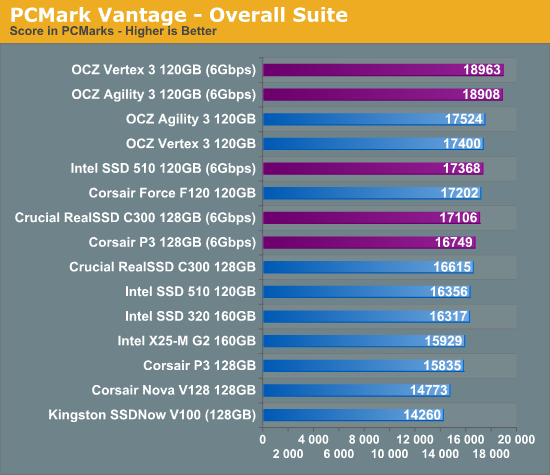
The SandForce drives hold a 10% advantage over the Intel SSD 510 in this test. For truly light desktop workloads it's near impossible to offer better performance than SandForce as most of the data written never actually hits NAND.
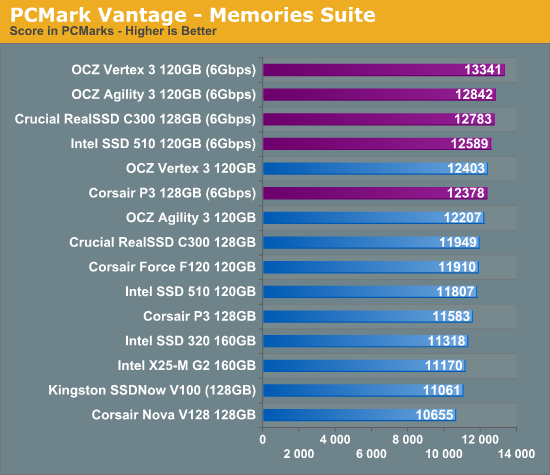
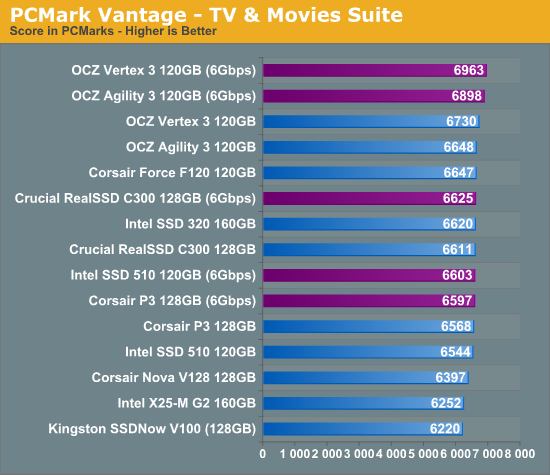

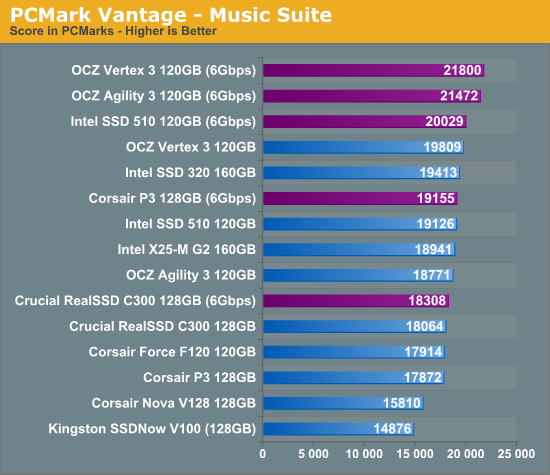
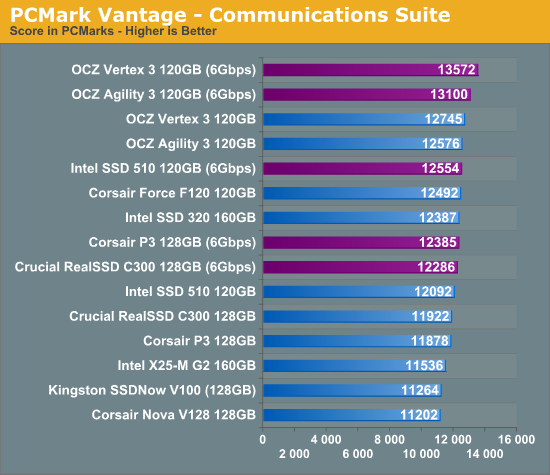
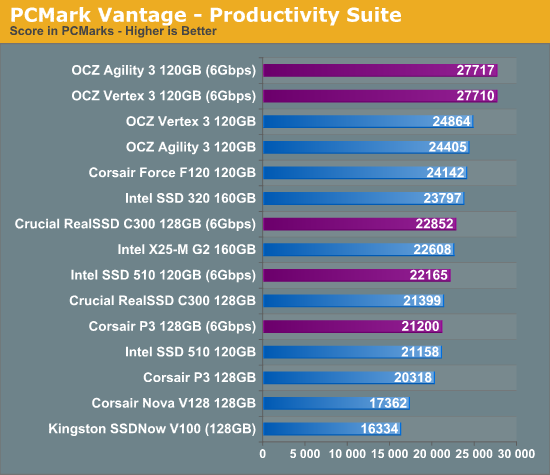
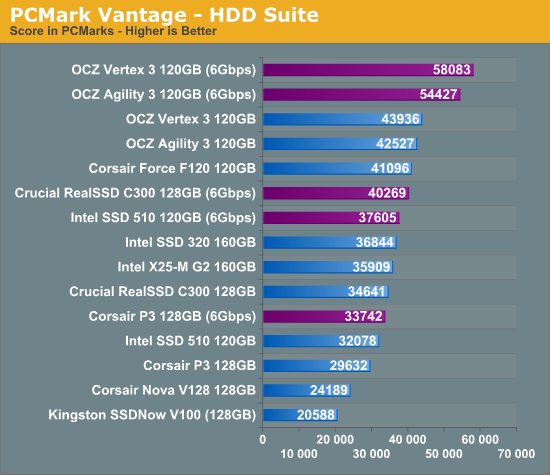










68 Comments
View All Comments
johan851 - Tuesday, June 7, 2011 - link
I've been wanting a comparison like this for a couple of weeks now, and I'm really glad you provided one. Thanks!Oxford Guy - Thursday, June 9, 2011 - link
Now if we could get a review with the 240 GB Vertex 2.That has been as low as $309 AR at MicroCenter. Yet, despite being able to be found for low prices ($350 AR lately), it's still nowhere to be found in reviews here.
shamans33 - Tuesday, June 7, 2011 - link
I just bought one for $220 before a $20 MIR about 2 weeks ago.Furthermore, your OCZ Agility 3 price is more expensive than the OCZ Vertex 3 price.....
Might want to look into getting pricing from a variety of vendors.
Anand Lal Shimpi - Tuesday, June 7, 2011 - link
Updated :)aegisofrime - Tuesday, June 7, 2011 - link
You updated the price but not the price per GB. :pI haven't had time to read through the whole article as I have to sleep now, so forgive me if my following question was addressed in the article. I'm considering a 120GB Intel 320, and I'm wondering will performance be lower than the 160GB version?
cactusdog - Wednesday, June 8, 2011 - link
Why no Corsair force 3 drives? Or mushkin ChronosFallen Kell - Wednesday, June 8, 2011 - link
They were all just recalled, that is why.http://forum.corsair.com/v3/showthread.php?t=95825
Shadowmaster625 - Tuesday, June 7, 2011 - link
No wonder intel was in no hurry with sata6. Half a watt extra power consumption at idle? Will that be the same for notebooks and tablets? If so then that is a serious problem. Why would power consumption be different at idle anyway?imaheadcase - Tuesday, June 7, 2011 - link
I read sometime back that intel drives performance might suffer simply because of power issues itself. Nothing bad mind you, just that its standby mode interferes with transferring data somewhat. Not sure if thats a firmware or just config error.Jaybus - Friday, June 10, 2011 - link
Because, even though sata6 has improved power management, the higher clock rate simply requires more power. Even at idle, there has to be some communication between the SSD and the SATA host controller. Primarily, it is up to the OS to put the SATA link into sleep mode. In general, sata6 will always use more power than sata3, since you can't get around the physics. Clocking faster requires either more power or a complete paradigm shift to an optical PHY.